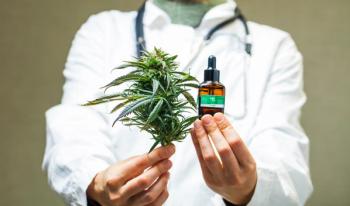
From Patchwork to Prepared: Bridging the Gap Between State and Federal Cannabis Compliance

This blog explains how cannabis businesses can navigate evolving regulations as federal oversight looms, emphasizing compliance with GACP, cGMP, and OSHA standards for future success.
The US cannabis industry has developed within a complex web of state-specific regulations in the absence of federal oversight. Each state has taken a different approach, resulting in a patchwork of laws that companies must navigate to remain compliant. However, with federal rescheduling discussions gaining traction, it’s increasingly clear that alignment with national standards, particularly those from the Food and Drug Administration (FDA) and the Occupational Safety and Health Administration (OSHA), is on the horizon.
To ensure long-term sustainability and protect public health, cannabis, and other plant medicine product operators should begin preparing now. This article outlines the importance of bridging current state requirements with emerging federal expectations and offers practical steps for building a more resilient and compliant operation.
Understanding the Shift Toward Federal Oversight
Rescheduling cannabis from Schedule I to Schedule III would mark a major shift in federal policy, triggering additional regulatory requirements from federal agencies. Even in the absence of formal FDA oversight, state regulators are already adopting elements of federal frameworks—especially in areas related to consumer safety, manufacturing quality, and workplace safety.
Three trends highlight this movement:
- Rescheduling Momentum – Federal agencies such as the Drug Enforcement Administration (DEA) and FDA are preparing for a future in which cannabis is no longer fully prohibited.
- State-Federal Alignment – States including California, New York, and Colorado are integrating FDA Good Manufacturing Practices (GMP) and OSHA standards into their licensing structures.
- Industry Expectations – Buyers, insurers, and investors are seeking more rigorous compliance frameworks to ensure quality, consistency, and transparency.
Evolving Federal Compliance and the 2025 Farm Bill
The upcoming 2025 Farm Bill is expected to play a pivotal role in shaping federal oversight of the hemp and tetrahydrocannabinol (THC) cannabis industries. While previous versions of the Farm Bill focused primarily on hemp cultivation and cannabidiol (CBD), stakeholders are anticipating significant updates that may impact testing requirements, cannabinoid thresholds, and pathways for broader FDA regulation.
Key areas under review for the 2025 Farm Bill include:
- Revised THC Thresholds – The current 0.3% delta-9 THC limit may be reevaluated to better reflect total THC or alternative cannabinoid concentrations, potentially changing how finished products are classified and regulated. Many CBD companies will have to reformulate to ensure compliance with the new requirement and it may be difficult for many to change.
- Expanded Definitions and Scope – Congress may clarify the legal status of intoxicating hemp-derived cannabinoids (like delta-8 and delta-10 THC), which could result in stricter regulatory enforcement or reclassification. This new clarity would re-define hemp to exclude the following:
- Cannabinoids that are not capable of being naturally produced
- Cannabinoids that are capable of being naturally produced but were synthesized or manufactured outside of the plant
- Quantifiable amounts of THC or THCA, or other cannabinoids that have similar effects on humans or animals
- FDA Guidance on Cannabinoids in Food and Supplements – The FDA has yet to formally regulate CBD and other cannabinoids in consumer products, although if there was an outbreak or complaint, they certainly have the jurisdiction to investigate. The 2025 Farm Bill may contain language directing the agency to establish a clear regulatory framework, which would include GMP requirements, labeling mandates, and dosage thresholds.
- Enhanced Oversight for Testing Labs – Calls for laboratory standardization, proficiency testing, and third-party accreditation are gaining traction as industry stakeholders seek to curb potency inflation and testing inconsistencies. We will have to wait and see exactly how they will tackle this ongoing industry issue.
- New Industrial Hemp Definition- At the same time, the new legislation would create a clear distinction for industrial hemp grown for non-cannabinoid uses like fiber and grain, separating it from cannabinoid-producing crops altogether.
- In practical terms, this means backing away from the 2018 Farm Bill’s one-size-fits-all definition of hemp as anything containing less than 0.3% delta-9 THC by dry weight at pre-harvest. That original definition, which opened the door to federal hemp legalization, may be reconsidered to reflect more nuanced categories of use and regulation.
Key Standards to Understand
While regulations vary by jurisdiction, several federal standards offer a framework for companies that wish to align with future expectations. Understanding and implementing components of the following systems can help bridge the current regulatory gap.
Good Agricultural and Collection Practices (GACP)
GACP certification is based off of GAP (good agricultural practices), the existing federal standard and is relevant to cultivation operations. It outlines quality and safety principles for growing and harvesting plant materials intended for pharmaceutical or food production. Key components include:
- Full set of compliant GACP standard operating procedures (SOPs) are properly written and maintained
- Documented processes for each stage of plant growth
- Pest control methods that protect product integrity
- Proper sanitation and hygiene practices
- Worker training and oversight
Adopting GACP protocols helps ensure traceability, which is critical for future compliance with both federal regulations and international trade standards.
Current Good Manufacturing Practices (cGMP)
cGMP guidelines are used by the FDA to ensure the quality and safety of food, dietary supplements, pharmaceuticals, and cosmetics. For cannabis processors, extractors, and product manufacturers, aligning with cGMP means:
- Developing and maintaining cGMP specific SOPs
- Implementing quality assurance and quality control (QA/QC) programs
- Ensuring proper sanitation, calibration, and maintenance of equipment
- Keeping detailed records of production activities, trainings, and outcomes
Even though cannabis is not yet federally regulated, cGMP principles are increasingly being required by state agencies and expected by retailers and distributors.
OSHA Safety Standards
Worker safety is a federal concern regardless of cannabis’s legal status. OSHA regulations apply to all workplaces, including cultivation, processing, and manufacturing facilities. Relevant OSHA compliance areas include:
- Developing and maintaining OSHA specific SOPs
- Hazard Communication (HazCom) and labeling of chemicals
- Proper use of personal protective equipment (PPE)
- Ventilation and fire suppression systems for extraction rooms
- Training programs for equipment and emergency procedures
Proactively addressing OSHA requirements can prevent workplace accidents, reduce liability, and avoid costly fines during inspections.
Voluntary Audits and Internal Assessments
A growing number of cannabis businesses are choosing to undergo voluntary audits based on federal standards. These audits help identify gaps in current operations and prepare companies for potential future inspections by regulatory authorities.
Voluntary assessments typically review:
- Facility layout and flow of materials
- SOP documentation and employee adherence
- QA/QC programs and testing protocols
- Employee safety procedures and training records
Conducting an audit can clarify where resources should be allocated to improve systems, reduce risk, and demonstrate a proactive approach to compliance.
Practical Steps Toward Bridging the Compliance Gap
To move toward alignment with federal standards, cannabis businesses can adopt the following practices:
- Perform a Gap Analysis – Evaluate current operations against GACP/cGMP, and OSHA benchmarks to identify areas that need improvement.
- Establish Comprehensive SOPs – Standardized procedures to ensure consistent practices across teams and support training, accountability, and audits.
- Implement a Quality Management System (QMS) – A QMS centralizes document control, corrective actions, training logs, and complaint handling, supporting regulatory readiness.
- Invest in Workforce Training – This is required to help ensure that staff understand and follow procedures. This is essential for both safety and operational success.
- Engage in Continuous Improvement – Compliance is not a one-time effort. Regular reviews, updates, and staff engagement are necessary to maintain and evolve systems as regulations change.
Preparing for the Future
The cannabis industry is transitioning from its early experimental phase into a regulated marketplace with higher expectations. Operators who understand and embrace this shift will be better positioned to succeed in the years ahead. While compliance can be resource-intensive, it ultimately supports consumer safety, worker safety, brand credibility, and market expansion.
Rather than viewing federal standards as a burden, businesses can approach them as tools to enhance operational maturity and demonstrate leadership within the industry. Adopting best practices now enables companies to grow responsibly and respond effectively when federal oversight becomes a reality.
The regulatory patchwork that has characterized cannabis compliance is slowly evolving into a more standardized system, driven by federal interest and rising market expectations. By voluntarily aligning with GACP, cGMP, and OSHA standards, cannabis businesses can protect their operations, ensure product quality, and build the credibility needed to compete on a national and international scale.
Whether federal legalization happens this year or in the next five, the path forward is clear: companies must prepare to meet the standards that will define the next era of cannabis regulation.
About the Author
Kim Anzarut, CQA, CP-FS is the CEO and founder of Allay Consulting. Direct correspondence to:
Newsletter
Unlock the latest breakthroughs in cannabis science—subscribe now to get expert insights, research, and industry updates delivered to your inbox.





